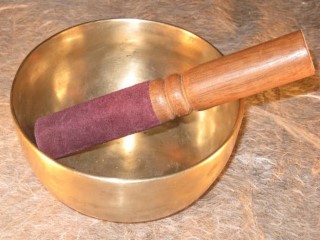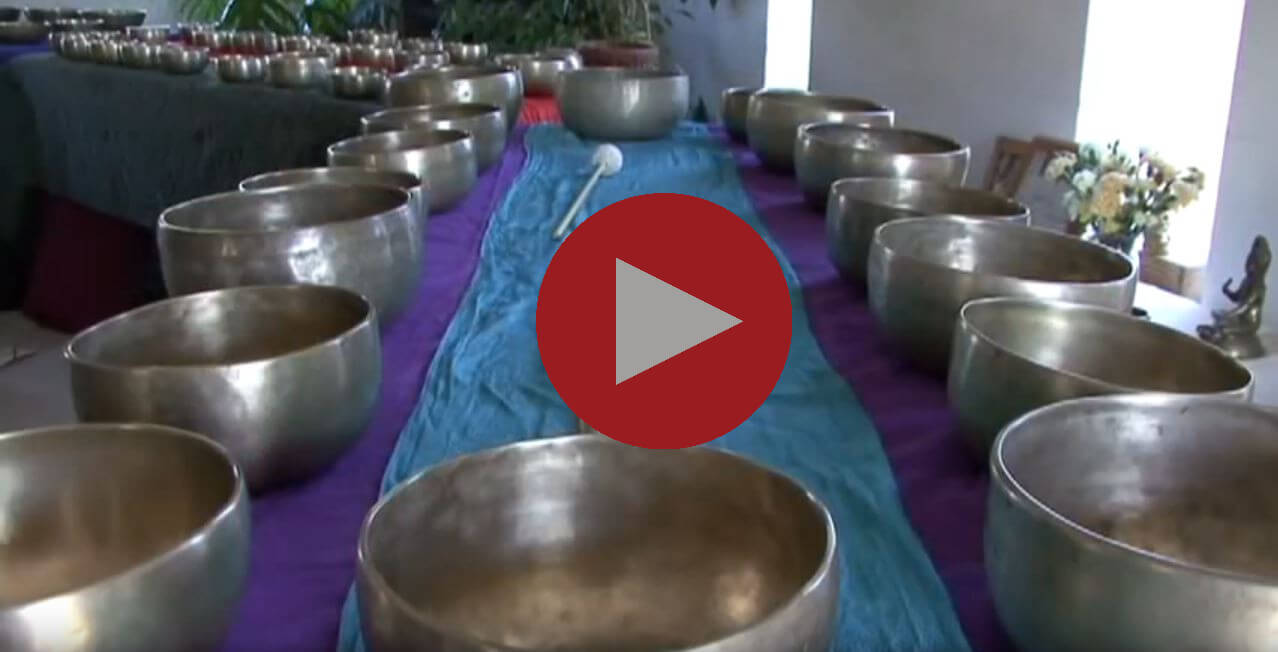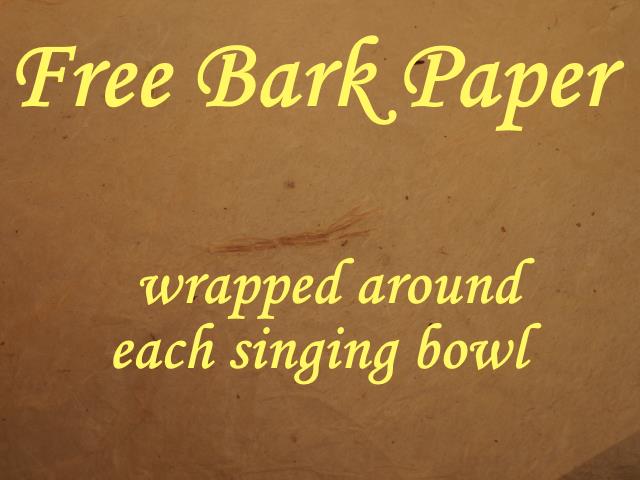While you won’t find a contemporary bowl for sale on this site, it is important to understand the landscape.
Bowls and Bells
There is a very important fundamental distinction in the manufacturing process between singing bowls and bells. I would say it is analogous to the difference between woven and knit fabric; you may not notice it because the result is so similar but once you look close you discover they are actually in different worlds. This distinction can be summed up as :
Hammered or Cast?
Bells are cast. Hot metal is poured into a form, allowed to cool, broken out then finished by removing metal with abrasive tools and materials. Singing bowls are hammered. Metal that is either very hot or room temperature cold is beaten into shape with usually very  little finishing in the end. The difference between these two methods is plain to the ear. The compression of the hammering process adds a complexity to the tone that a cast bell generally lacks. I say generally because precious metals can go a long way towards augmenting the tone of any metal object. The 300 year old temple bell in the picture is cast. It has just as much metal as a singing bowl but nowhere near the staying power.
little finishing in the end. The difference between these two methods is plain to the ear. The compression of the hammering process adds a complexity to the tone that a cast bell generally lacks. I say generally because precious metals can go a long way towards augmenting the tone of any metal object. The 300 year old temple bell in the picture is cast. It has just as much metal as a singing bowl but nowhere near the staying power.
New Singing Bowls
I have visited places in Asia where they were making new metal singing bowls with hand methods. My own personal singing bowl making experience was using cold metal. From what I’ve seen the usual way to do it involves pounding on red hot metal. The process is quicker, a set of three or four singing bowls might take fifteen minutes to form from a multi-layered planchet. Generally it requires more than one person working on the bowls at a time. After forming the bowl there are rough edges and soot to be worked out and markings to be added. You can get fairly decent sound out of a newly made hammered bowl, especially if the metal used is of high quality. Mostly, though, you get harsh tones that lack resonance. High quality metal in this case means more complex with some precious metal content and, if possible, including old metal objects as the source.
New Bowls, Antique Finish
New metal singing bowls tend to look new when they are made but a little bath in acid can add a darker, more antique finish
There is a group in the Kathmandu valley making rather pleasant looking medium thick Jambati singing bowls out of a good quality mix of metals. They have a solid export trade as I see their singing bowls in stores both in the US and Europe. These singing bowls have a darker finish like some antiques but are lacking the decorative features and wear patterns of old singing bowls. I have seen huge singing bowls, ones you can stand in. They’re great fun but like all new metal sound bowls, they lack the sonic complexity of great old singing bowls.
Machine Made Brass Bowls
The least expensive method of making new singing bowls is to leave out the hand labor. Machine-made bowls can be wonderfully clear and consistent, with no variation from bowl to bowl. They can sound pretty good, especially the small ones in the higher octaves, but there is a hollowness to the sound that is readily apparent once you ring a good old singing bowl next to them. Singing bowls made out of machines are often dressed up with chemical etching, antique finishing, and even sometimes cast figurines.
Best Singing Bowls is in the business of providing extremely high quality genuine antiques to individuals who value both antiquity and beautiful sound. I find the old singing bowls have character and energy that is missing from any 21st century bowl. There are lots of places you can go to get mass produced new singing bowls and some of them are quite inexpensive. I’m really interested in conveying antique singing bowls, not moving a lot of product so I’ve passed on the easy opportunity to import modern metal sound bowls with my old ones.
Singing Bowl Buyer Beware
If you see a singing bowl with etching, big Tibetan letters, and symbols or a little statue at the bottom it is a new singing bowl. Unfortunately, there are also places selling new “antique finished” singing bowls as old ones. Sometimes this is ignorance, but more often, malice. However, it happens it causes confusion and tarnishes the reputation of genuine antiques. Modern deliberate fakes never replicate the complex older singing bowl styles, for the most part they are simple Thadobati and Jambati shapes. Look for thin even rims, round bottoms, clunky hammer marks, no design features, very consistent color, and patina. Oh yes, and listen to the sound.
Fake Lingam Singing Bowls
While you aren’t going to see a fake thick and heavy bowl such as a Mani style, there are high end bowls that are subject to forgery. In recent times as supply dwindles there has been an emergence of fake lingam singing bowls, specifically the most rare and expensive Jambati and Thadobati types. When these fakes are made new telltale signs are in the patina, shape of the lingam, and distribution of metal. Lingams are so valuable people will start with an old bowl and add a lingam. Sometimes the lingam is a blob of metal arc welded onto the bottom and hammered into shape. You can see this at the interface between the original bowl and the lingam. Other times the bottom of the old bowl is hammered up. Here you can tell by the relative thinness of the metal and some wavy distortions in the metal caused by heating.
Lingam forgeries are all you see in the markets of old-town Delhi these days. Unfortunately, I’ve also seen forgeries and fake singing bowls on usually reputable websites where the people running them aren’t knowledgeable enough and believe the lies of the sellers. This forgery scene is really a shame as the true lingams are ceremonial objects where an energetic lineage is carried from the maker through the owners.
















